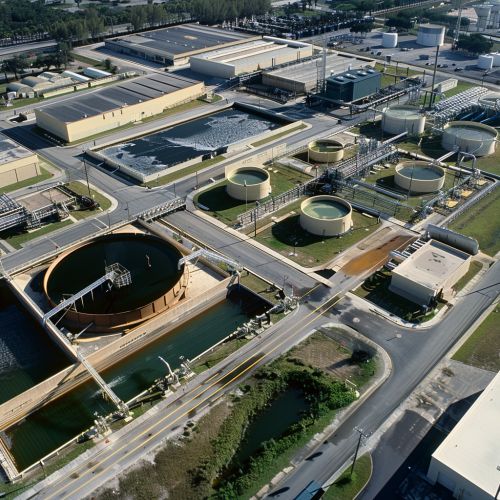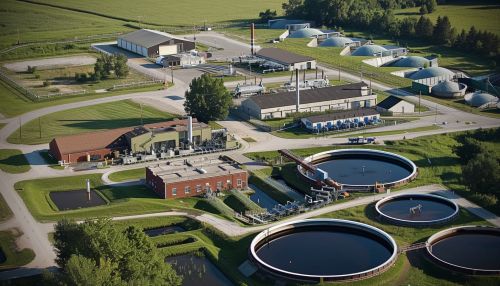Water Reclamation
Introduction
Water reclamation, also known as water recycling or water reuse, is a process that ensures the water supply is constantly replenished and not wasted. This process involves treating wastewater to make it fit for specific uses, such as irrigation, industrial processes, and even direct potable reuse.


History
The concept of water reclamation is not new. Ancient civilizations, such as the Romans, used simple methods of water reclamation for agricultural purposes. However, the modern concept of water reclamation began in the late 19th century with the development of sewage treatment technologies.
Process
The process of water reclamation involves several stages, each designed to remove different types of contaminants from the wastewater.
Preliminary Treatment
The first stage, known as preliminary treatment, involves removing large objects and grit from the wastewater. This is typically done using screens and grit chambers.
Primary Treatment
In the primary treatment stage, the wastewater is allowed to settle in large tanks known as primary clarifiers. Here, heavy solids sink to the bottom and are removed, while lighter materials like oils and greases float to the top and are skimmed off.
Secondary Treatment
The secondary treatment stage involves the use of biological processes to remove organic matter from the wastewater. This is typically done using activated sludge systems or trickling filters.
Tertiary Treatment
The final stage, known as tertiary treatment or advanced treatment, involves further treatment to remove any remaining contaminants. This can include processes such as filtration, disinfection, and nutrient removal.
Uses of Reclaimed Water
Reclaimed water has a wide range of uses, depending on the level of treatment it has undergone.
Irrigation
One of the most common uses of reclaimed water is for irrigation. This includes both agricultural irrigation and landscape irrigation, such as golf courses and public parks.
Industrial Processes
Reclaimed water can also be used in industrial processes. This includes cooling water for power plants and industrial facilities, process water for manufacturing, and even water for hydraulic fracturing in the oil and gas industry.
Groundwater Recharge
In some cases, reclaimed water is used for groundwater recharge. This involves injecting the water into underground aquifers for storage and later use.
Direct Potable Reuse
In some areas, reclaimed water is treated to such a high standard that it can be used for direct potable reuse. This means it can be used as drinking water, although this is still a relatively rare practice.
Benefits of Water Reclamation
Water reclamation has several benefits, both environmental and economic.
Water Conservation
One of the main benefits of water reclamation is that it helps to conserve water. By reusing wastewater, we can reduce our reliance on fresh water sources, many of which are under increasing pressure due to population growth and climate change.
Energy Savings
Water reclamation can also lead to significant energy savings. Treating wastewater for reuse typically requires less energy than treating fresh water.
Nutrient Recovery
In some cases, water reclamation can also allow for the recovery of valuable nutrients, such as nitrogen and phosphorus, which can be used as fertilizers.
Challenges and Concerns
Despite its benefits, water reclamation also faces several challenges and concerns.
Public Perception
One of the main challenges is public perception. Many people are uncomfortable with the idea of reusing wastewater, even if it has been treated to a high standard.
Health Risks
There are also potential health risks associated with water reclamation. If the treatment process is not properly managed, harmful bacteria or chemicals could remain in the reclaimed water.
Environmental Impact
There are also concerns about the environmental impact of water reclamation. For example, the discharge of treated wastewater into rivers or oceans can have a negative impact on local ecosystems.
Future of Water Reclamation
The future of water reclamation looks promising, with advances in technology and increasing awareness of the need for sustainable water management. However, significant challenges remain, and ongoing research and development will be needed to overcome these.
